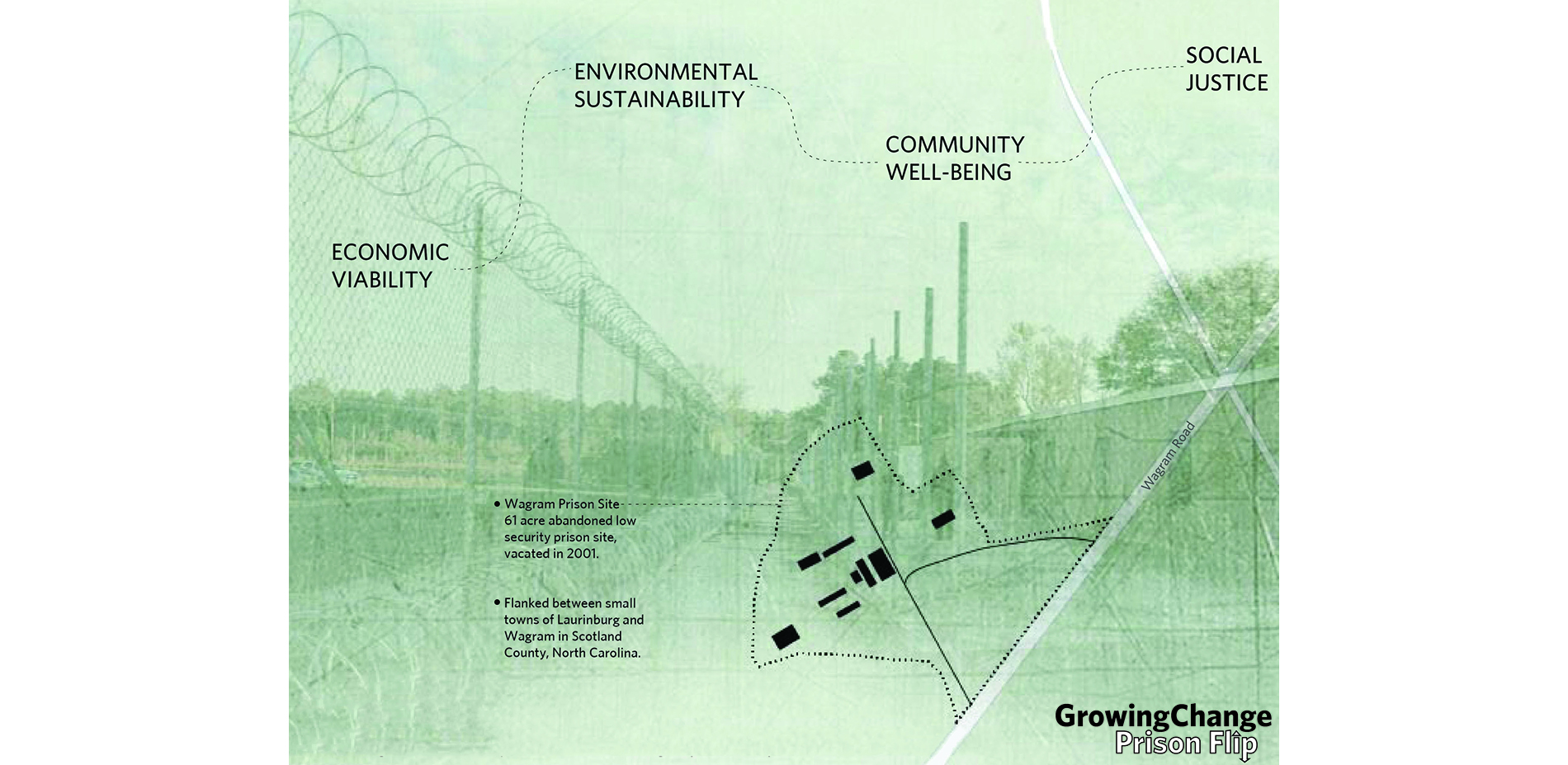
Reclaiming an Abandoned Prison Site
This initiative investigates the reclamation of an abandoned prison site, Wagram Prison in rural North Carolina, demonstrating a model how to flip such sites into an ecologically and socially robust asset for rural communities.
Photo Credit: Manpreet Kaur
Media: Please submit high-resolution image requests to images@asla.org.
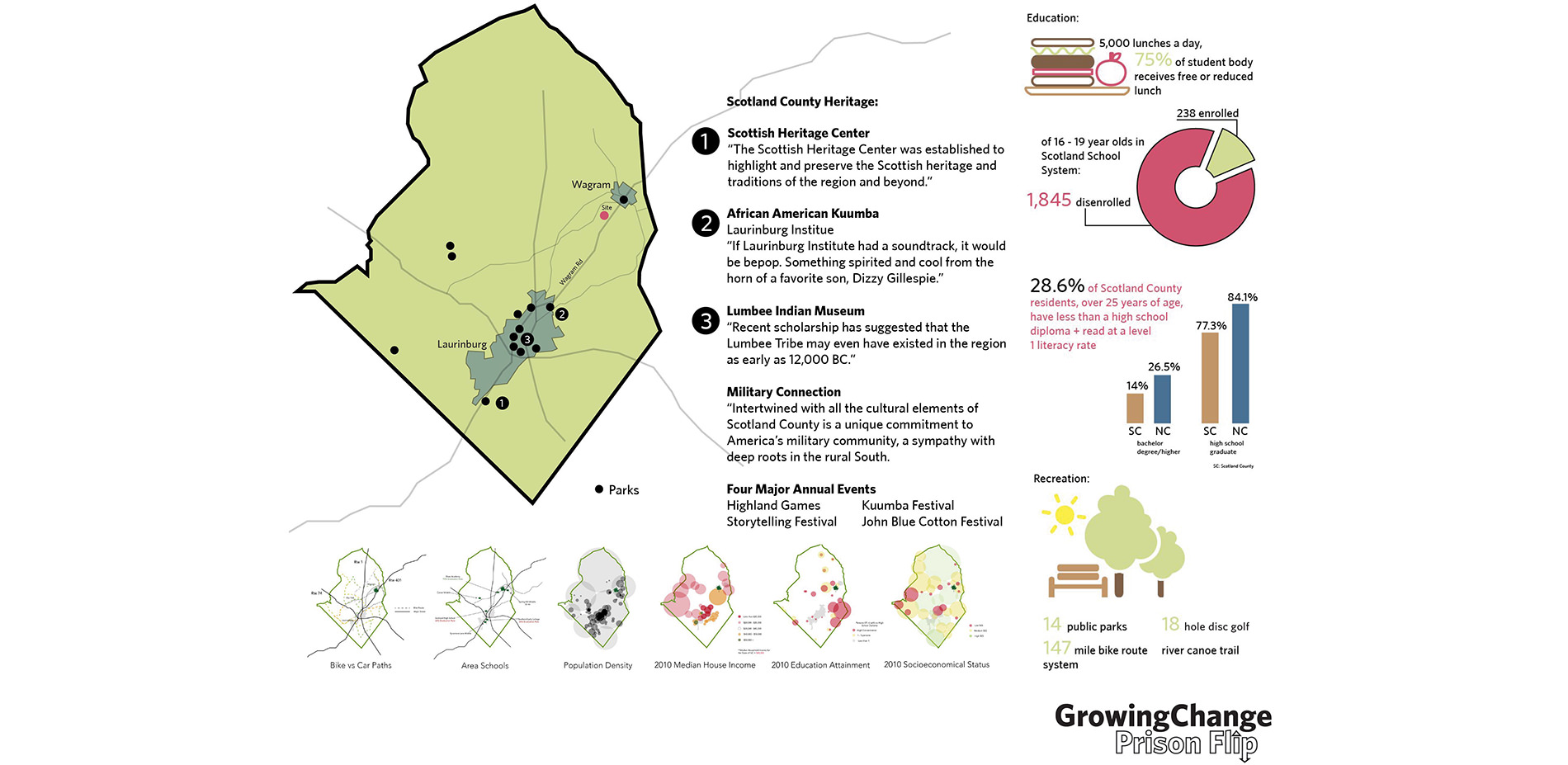
‘The Soul of the Carolinas’
Scotland County has a rich history and cultural values, however presently it is facing issues regarding education, quality of life, economic opportunities, and health and wellness.
Photo Credit: Yushan Ji, Manpreet Kaur, Katie Gay, Maryssa Timberlake
Media: Please submit high-resolution image requests to images@asla.org.
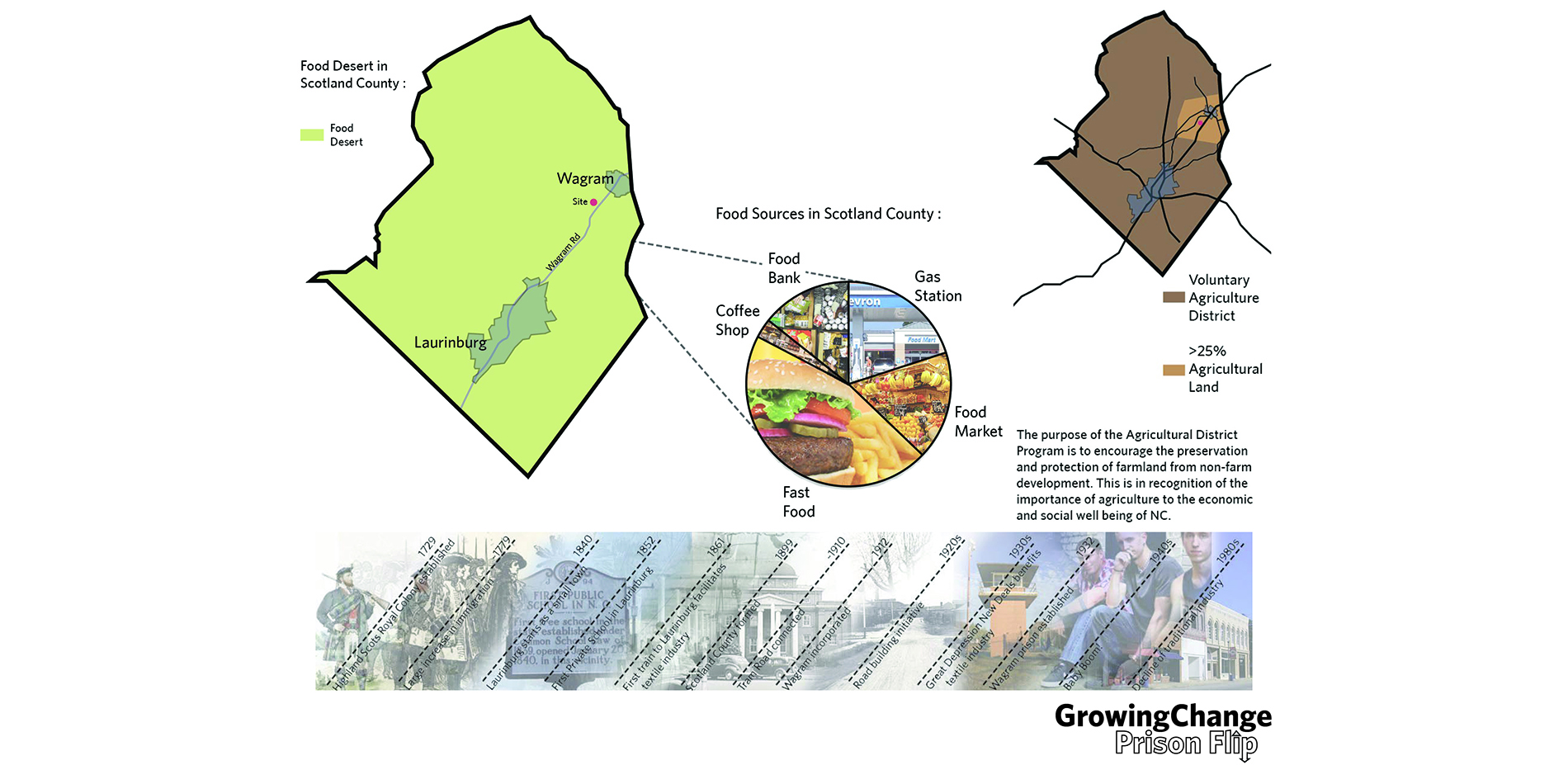
Historical Context + Rural Propaganda
Scotland County has NC’s highest food insecurity rate of 27.6% vs. 14.5% of the United States. Wagram Prison, owned by NCDOT, is located in a residential agricultural district, affording community agricultual interventions.
Photo Credit: Manpreet Kaur, Katie Gay, Maryssa Timberlake
Media: Please submit high-resolution image requests to images@asla.org.
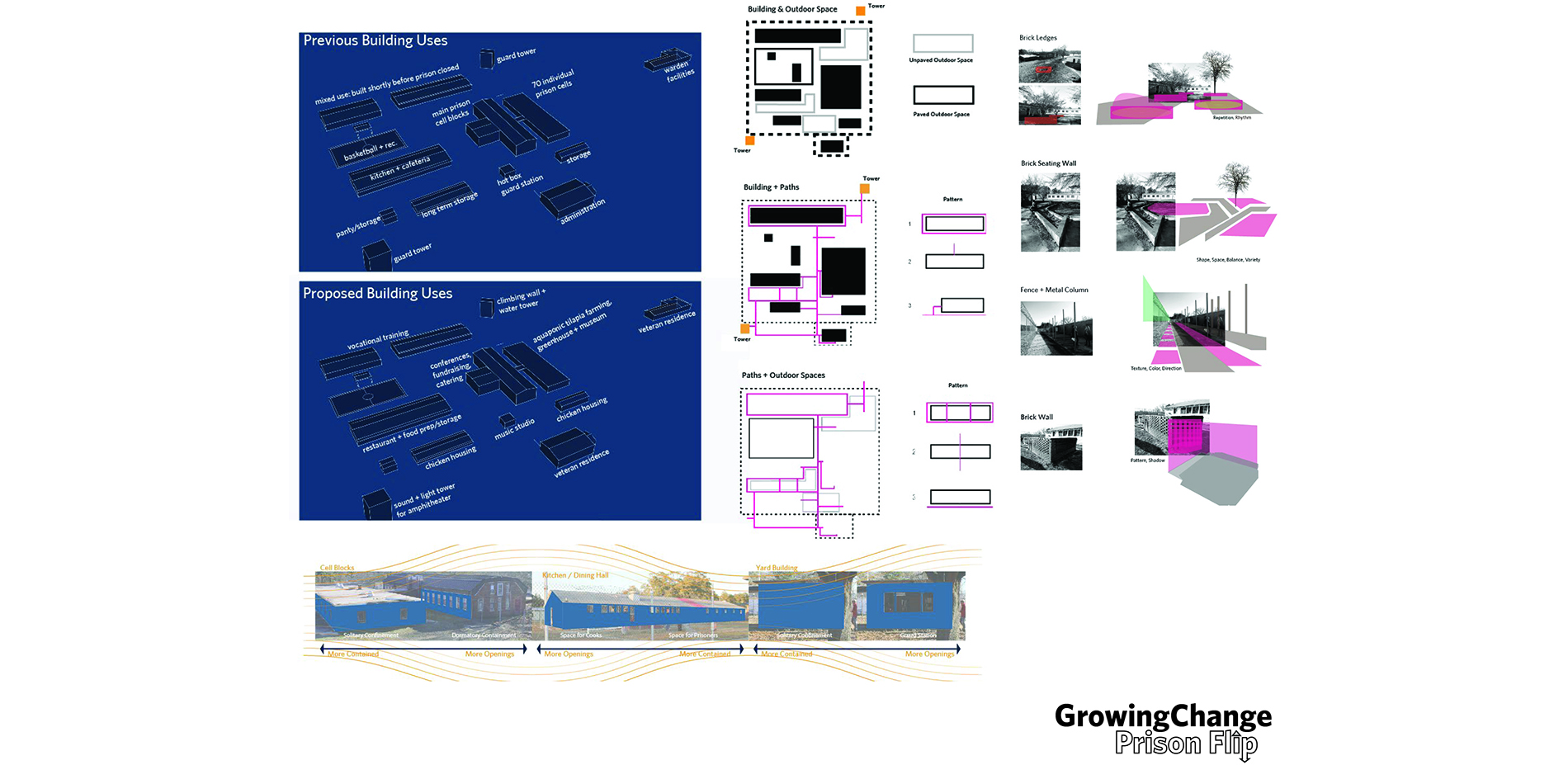
Prison Building and Outdoor Space Inventory + Character
Wagram Prison is characterized by existing structures that visually depict their original intentions of strength, power, containment, and oversight. The existing natural materials and elements should be amplified to counteract the current connotations.
Photo Credit: Peng Tian, Weng Wang, Josh Leab, Beth Faragan
Media: Please submit high-resolution image requests to images@asla.org.
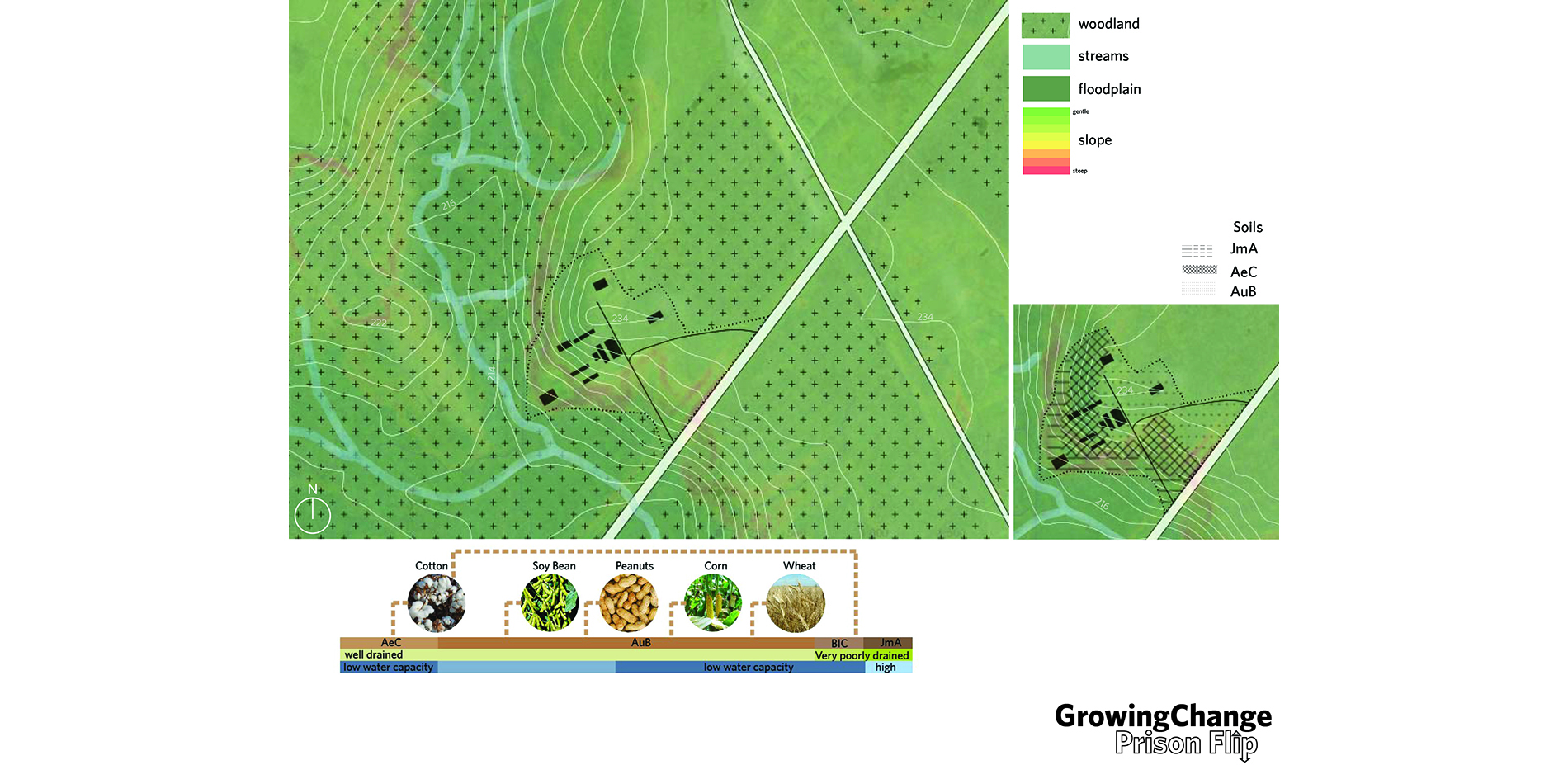
Natural Characteristics
There are many patches and corridors northwest and south of the site that could provide ecological habitat connections. Flat topographic character of the site affords opportunity for earthwork, while soils provide various viable planting zones for diverse crops.
Photo Credit: Yazhen Zhang, Manpreet Kaur
Media: Please submit high-resolution image requests to images@asla.org.
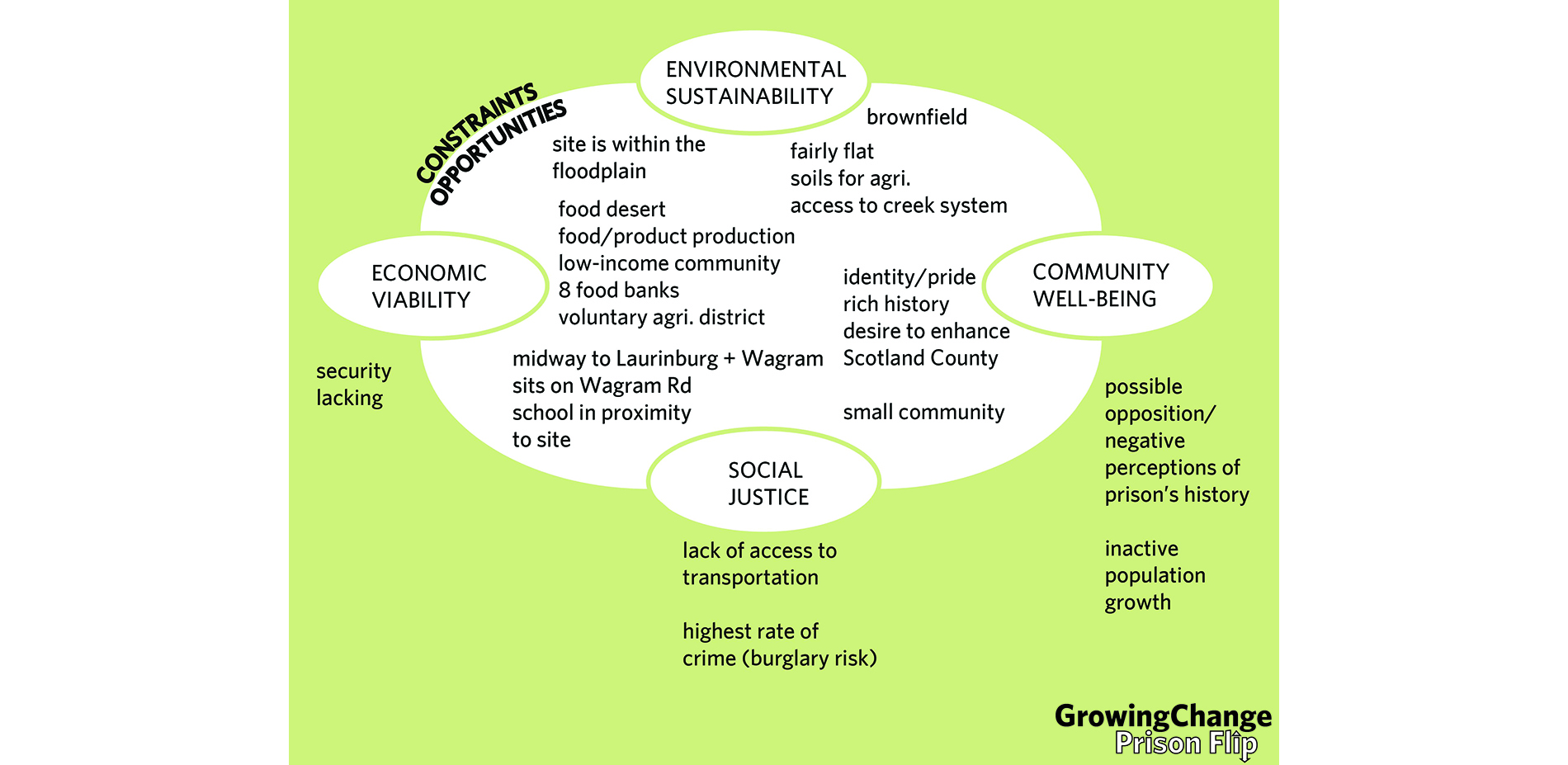
Opportunities + Constraints of the Site
After contextual and site analysis, the opportunities and constraints of the site were better understood while keeping in mind the project’s goals.
Photo Credit: Manpreet Kaur
Media: Please submit high-resolution image requests to images@asla.org.
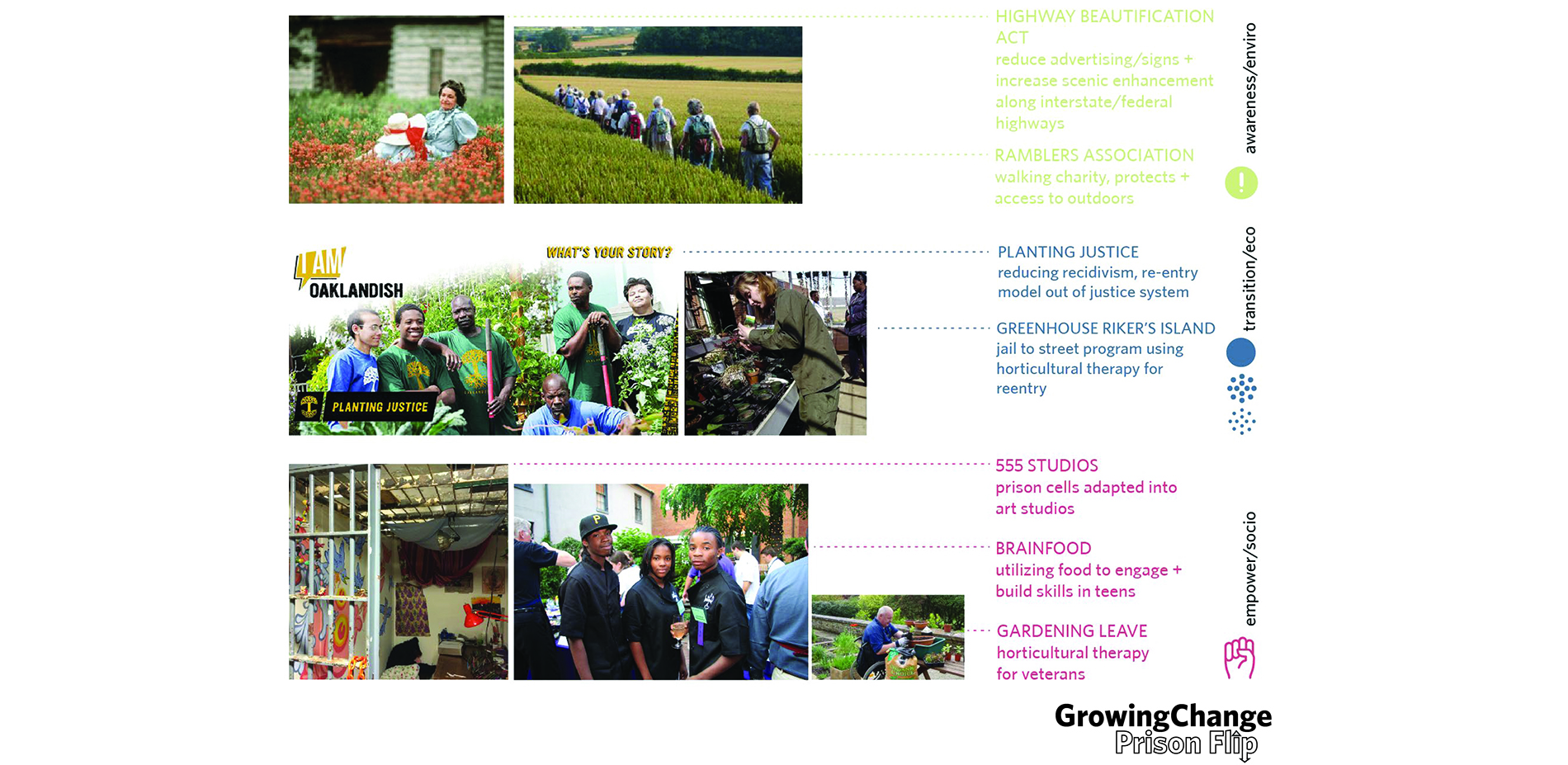
Precedent Studies
Existing efforts and organizations were investigated to understand the various methods that could be employed to accomplish the goals and vision of the project.
Photo Credit: Manpreet Kaur
Media: Please submit high-resolution image requests to images@asla.org.
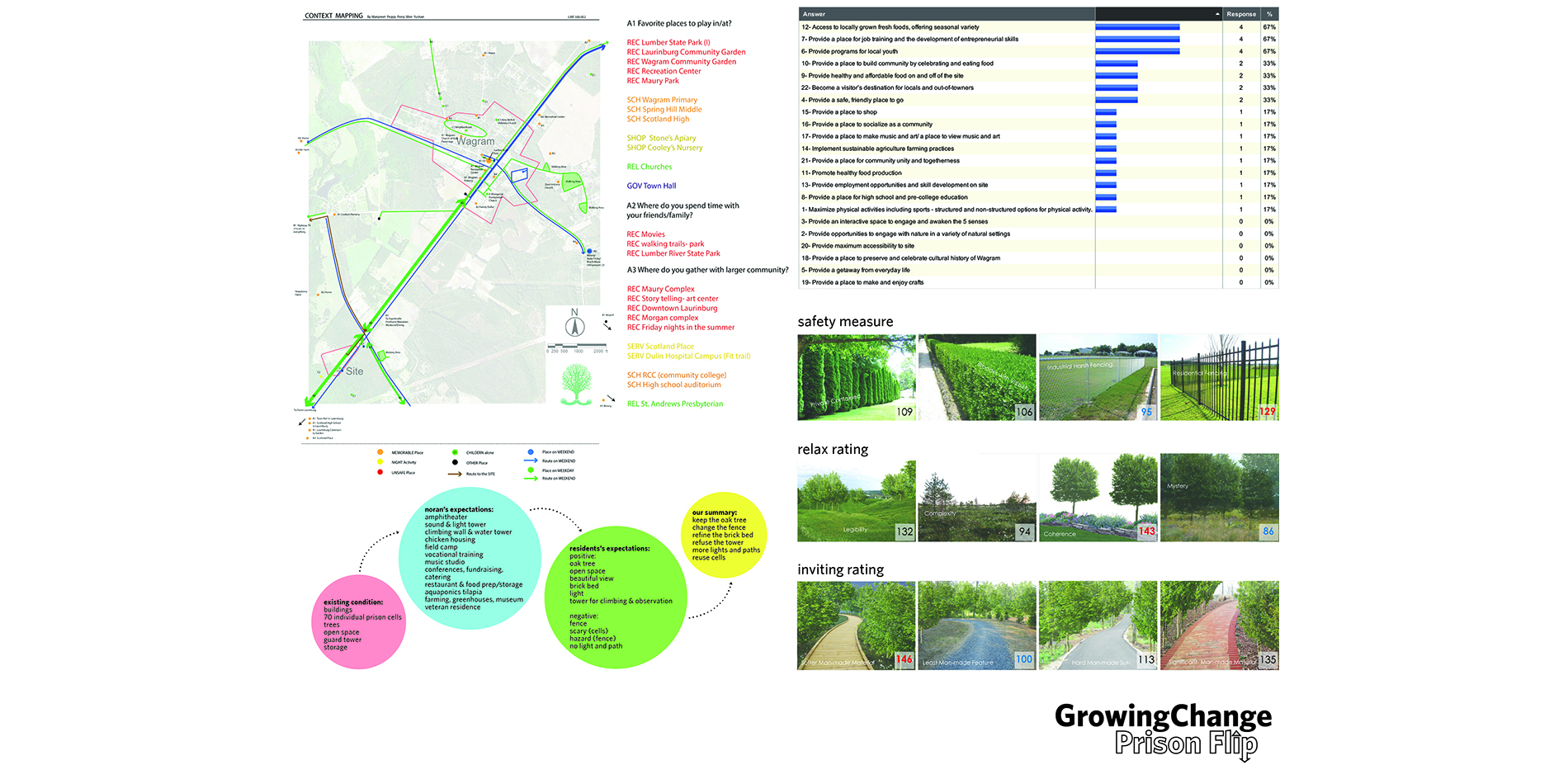
Community Engagement
A workshop was held where the community was able to sit with us and discuss their thoughts, concerns, and ideas for the redevelopment of the Old Wagram Prison Site.
Photo Credit: Peng Tian, Pei Chi Huang, Manpreet Kaur, Sadie Walters, Kyle Semon, Katie Gay, Maryssa Timberlake
Media: Please submit high-resolution image requests to images@asla.org.
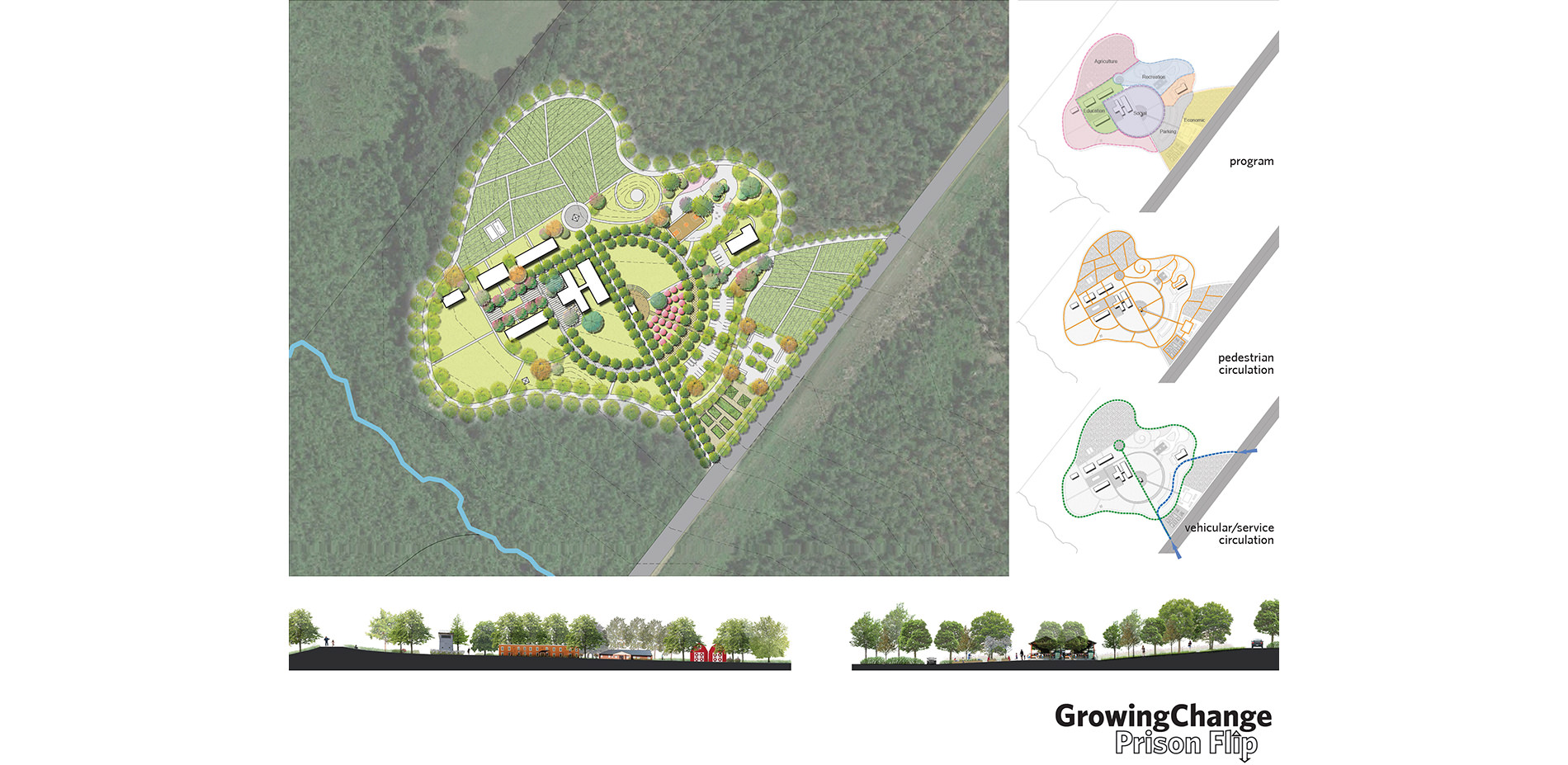
Design Scenario: Inspired Learning
This concept was conceived aiming to bringing education to life. With the community voicing their desire for places where local youth could learn and residents could receive vocational training, this concept hoped to fill those needs.
Photo Credit: Hongyi You, Yazhen Zhang
Media: Please submit high-resolution image requests to images@asla.org.
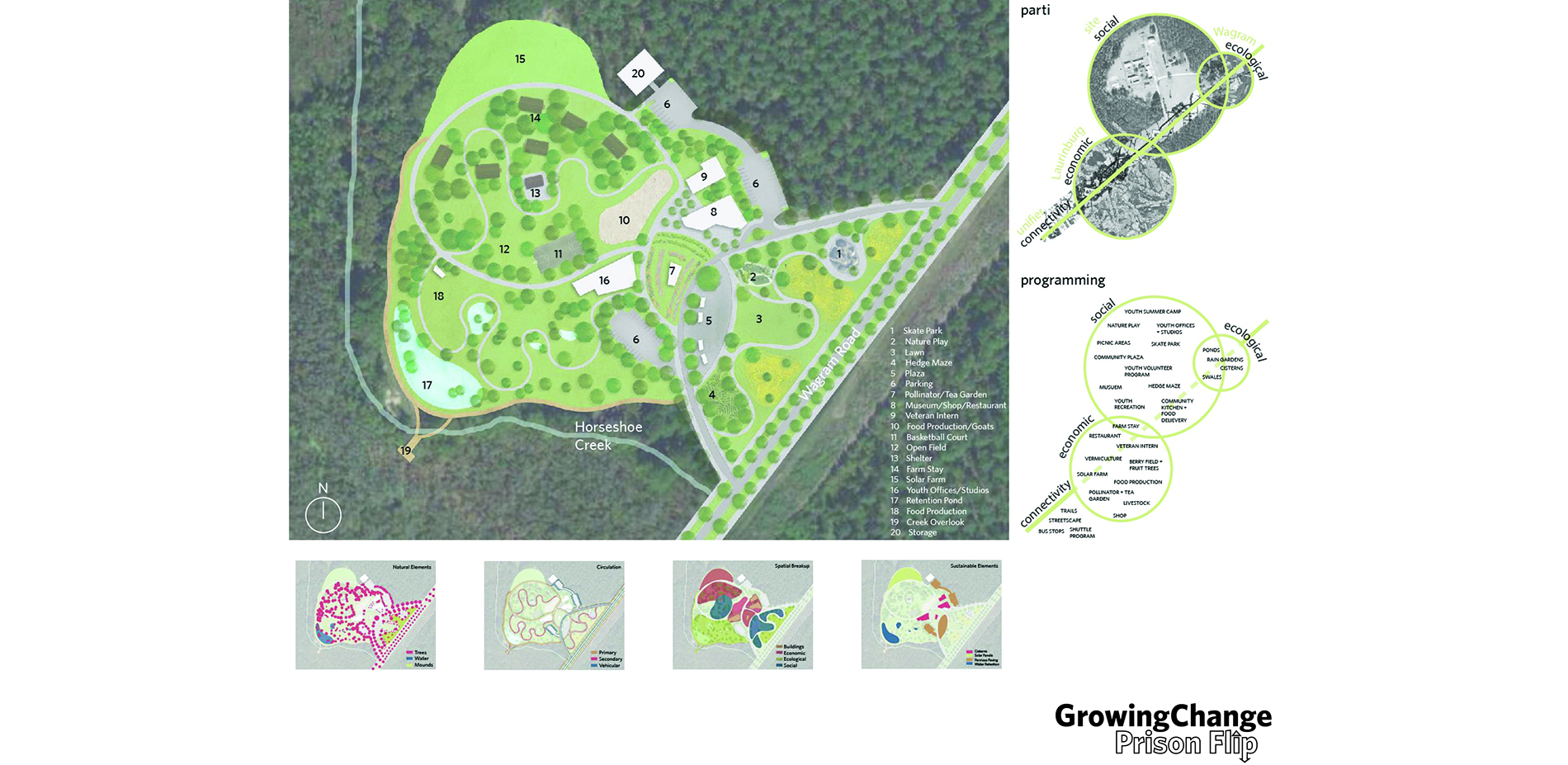
Design Scenario: Change of Destination
The concept was inspired by the term: destinare, to make firm, establish the action of intending someone or something for a particular purpose.
Photo Credit: Manpreet Kaur
Media: Please submit high-resolution image requests to images@asla.org.
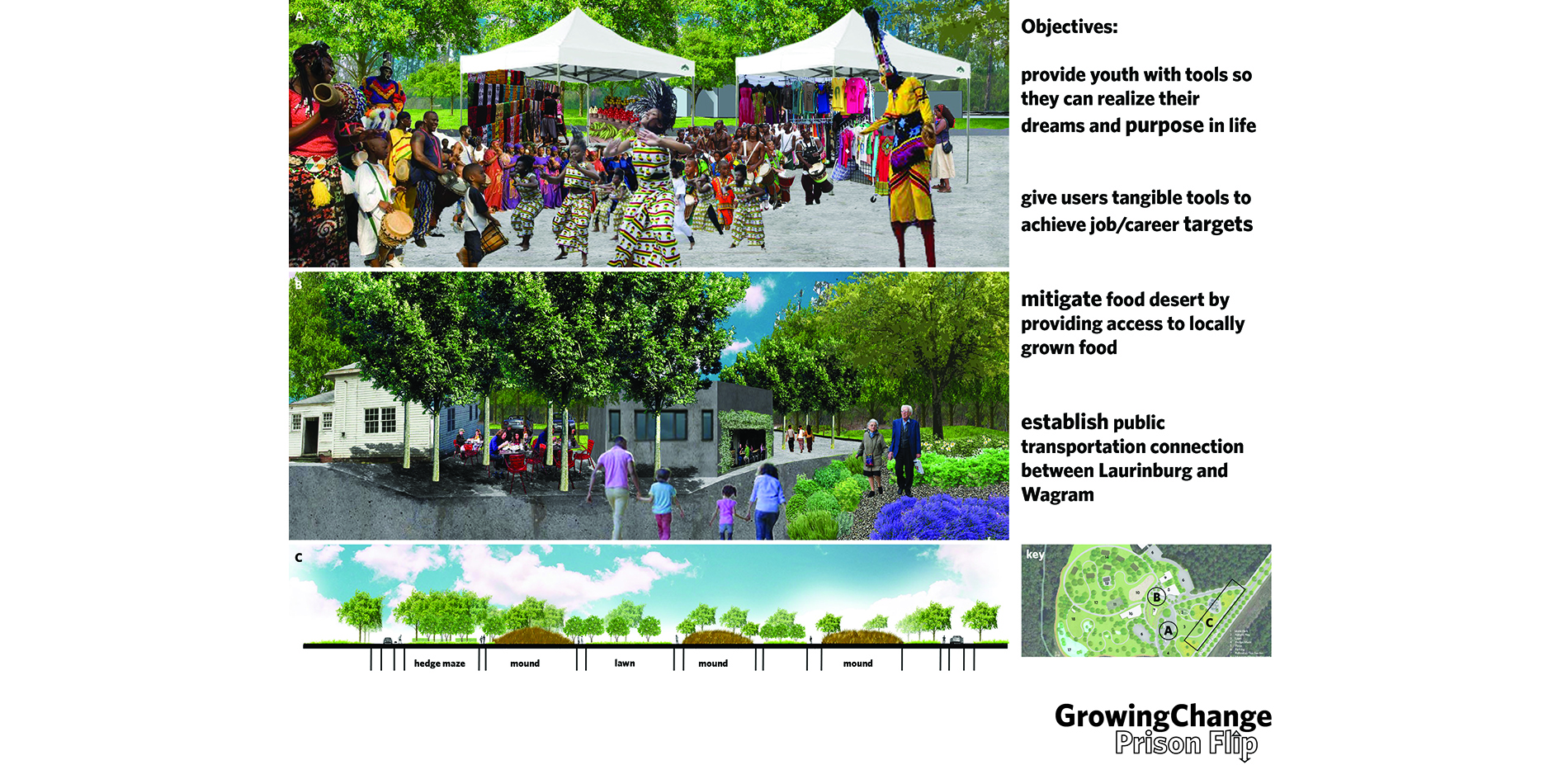
Design Scenario: Change of Destination
A place that serves as a physical and mental destination. A place that the youth, elders, and minority communities can utilize to enhance their social well being, further themselves economically, and contribute to sustainable practices.
Photo Credit: Manpreet Kaur
Media: Please submit high-resolution image requests to images@asla.org.
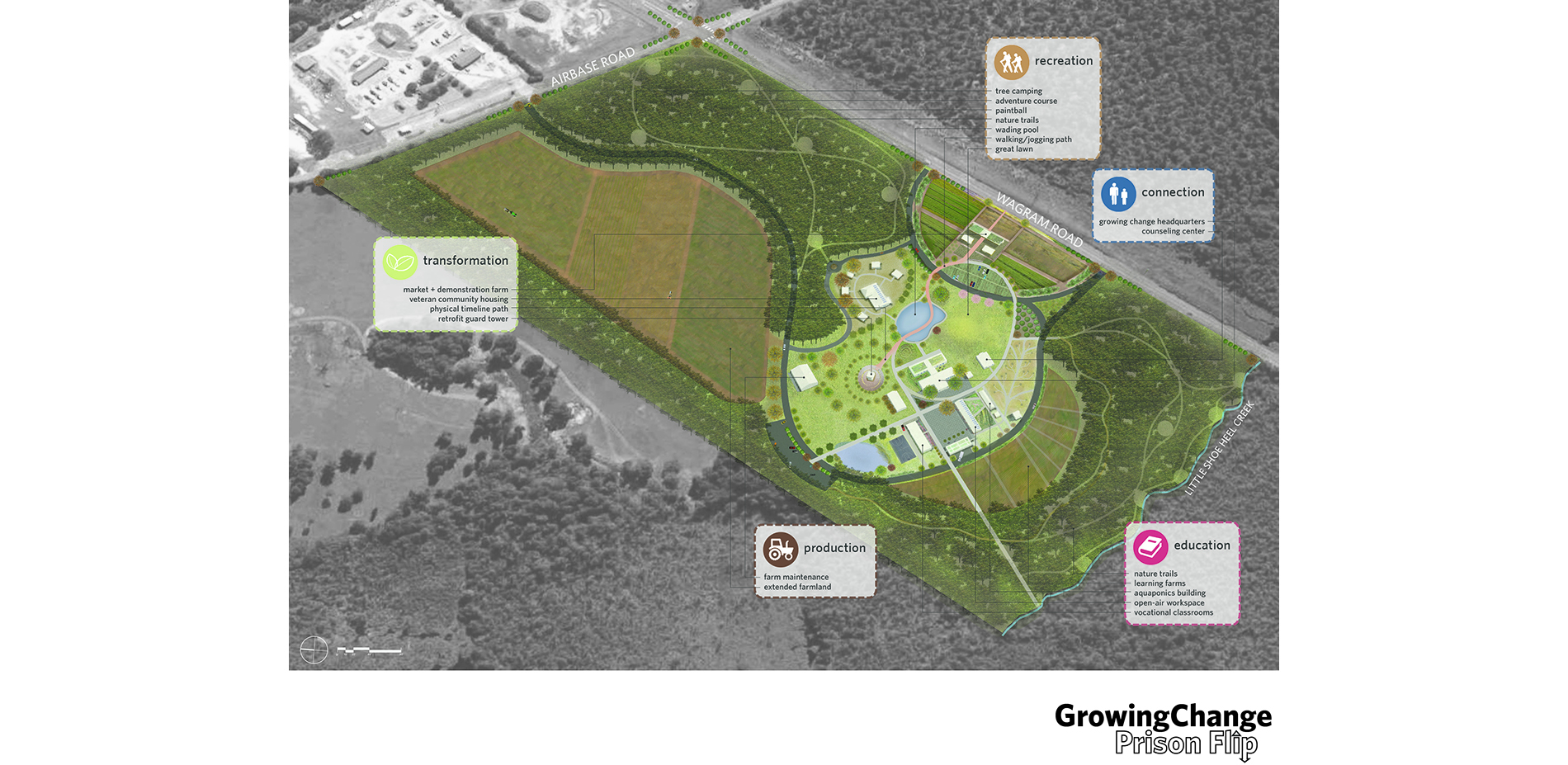
Final Vision
This proposed concept aims to embrace the Old Wagram Prison Site as a productional, educational, cultural, transformational, and recreational resource within the community by expanding opportunities on it that stimulates the quality of life of its community members.
Photo Credit: Josh Leab, Kyle Semon
Media: Please submit high-resolution image requests to images@asla.org.
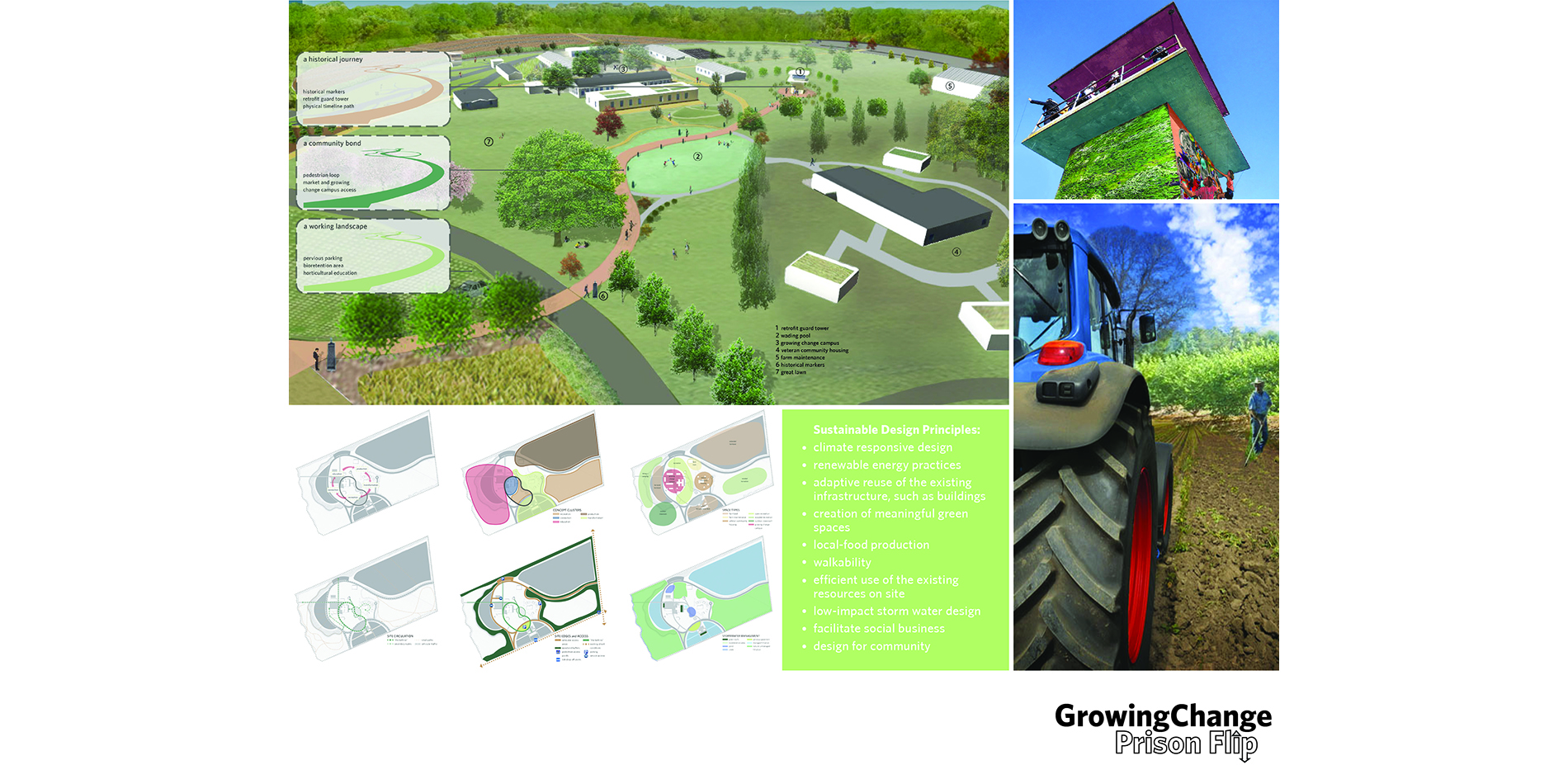
The Nucleus | Recreation + Production + Transformation ClustersThe development of a central path, which we have dubbed “The Beltline”, allowed us to connect the five key concept clusters providing easy access to each other. This loop is approximately 1/4 miles long.
Photo Credit: Josh Leab, Kyle Semon
Media: Please submit high-resolution image requests to images@asla.org.
Photo Credit: Josh Leab, Kyle Semon
Media: Please submit high-resolution image requests to images@asla.org.
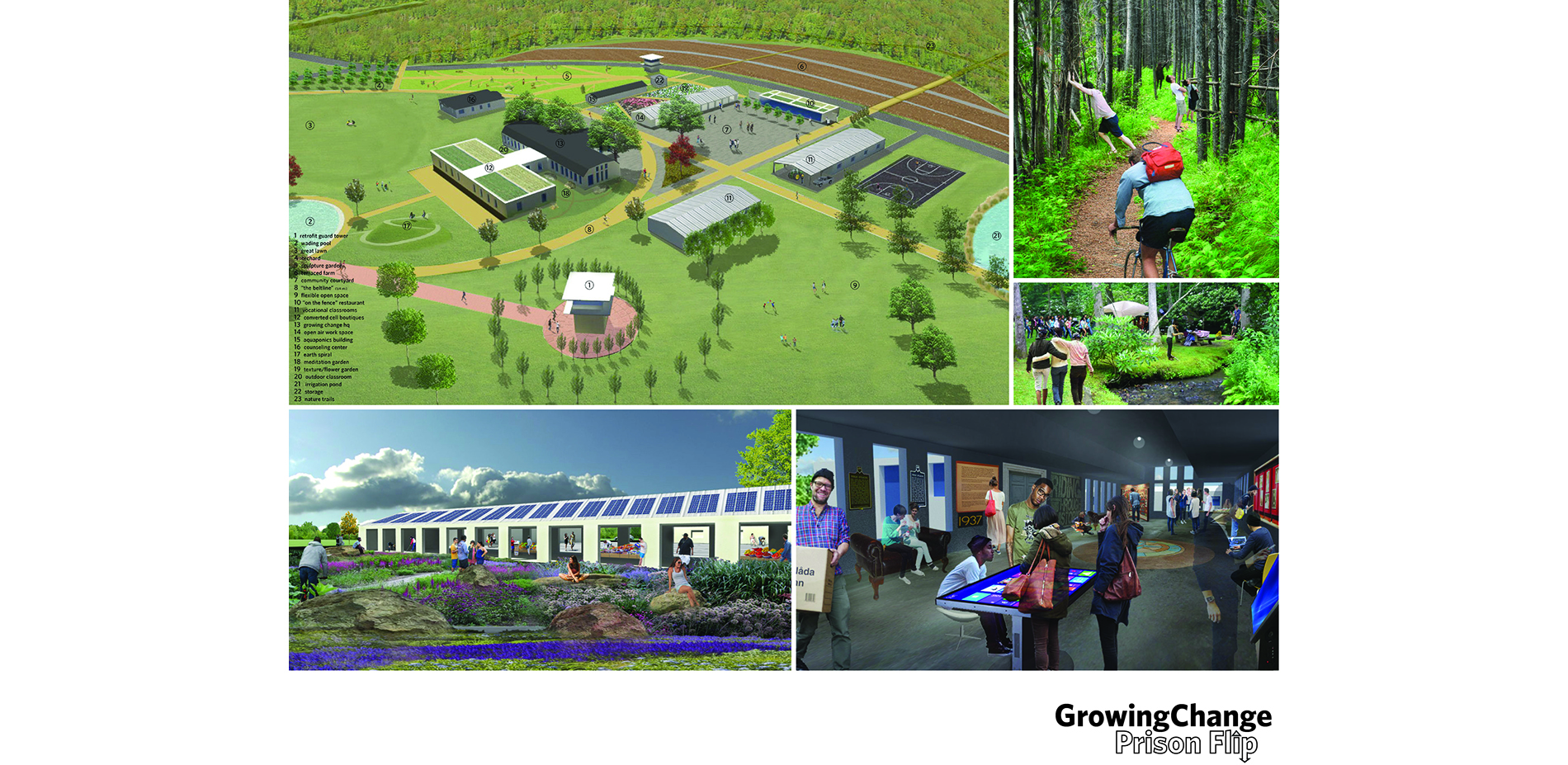
GrowingChange Campus | Connection + Education ClustersUtilizing the majority of the prison infrastructure, the GrowingChange campus focuses on connecting and educating the site’s visitors and the community. Vocational training, aquaponics tanks, youth farming, and converted cell boutiques will be located here.
Photo Credit: Josh Leab, Kyle Semon
Media: Please submit high-resolution image requests to images@asla.org.
Photo Credit: Josh Leab, Kyle Semon
Media: Please submit high-resolution image requests to images@asla.org.
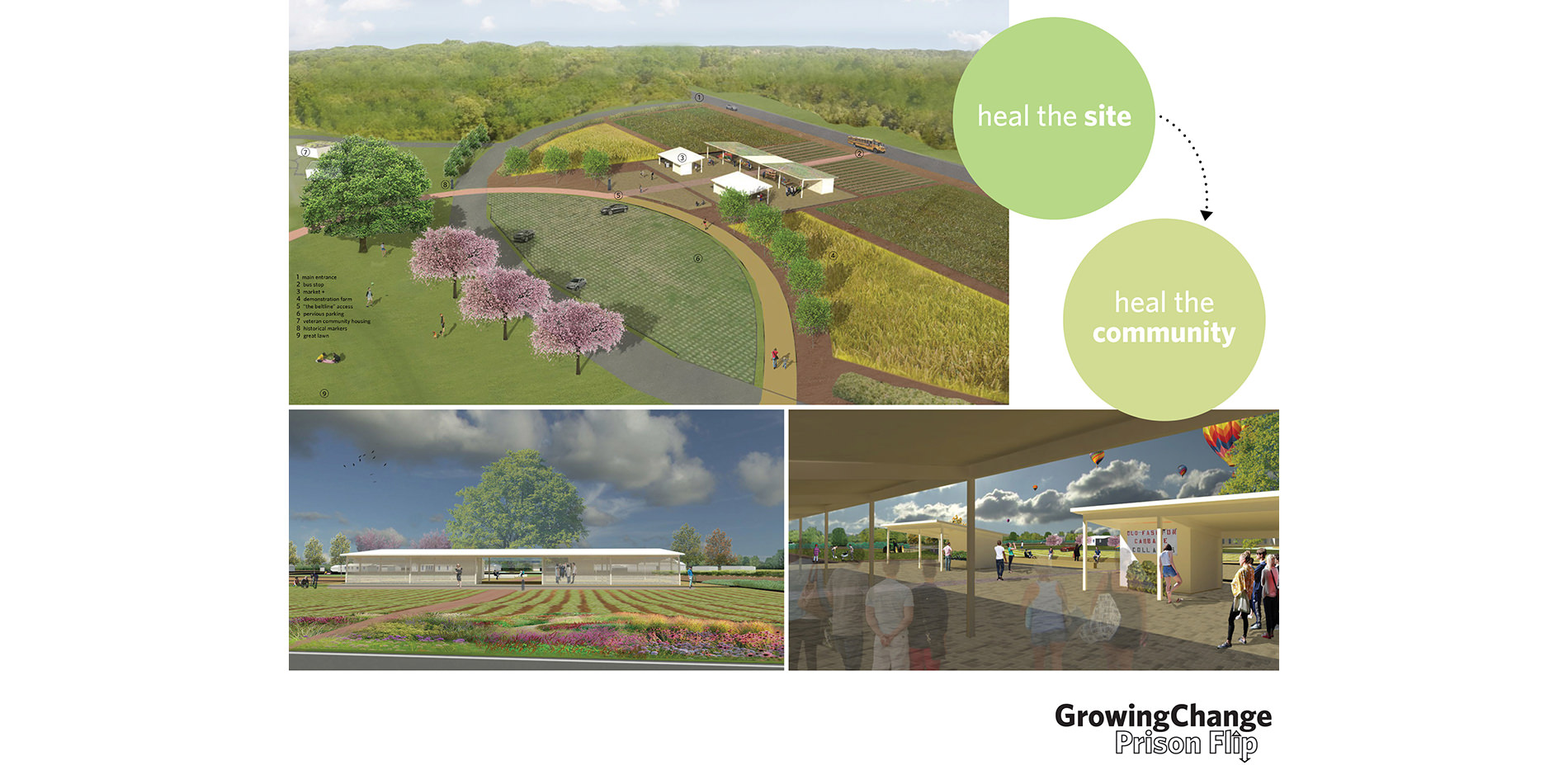
The Working Landscape | Recreation + Transformation ClustersThis design integrates the site back into the daily lives of the community by sustaining positive health outcomes, environmental awareness, and community engagement for Scotland County, NC. It provides a destination in town.
Photo Credit: Josh Leab, Kyle Semon
Media: Please submit high-resolution image requests to images@asla.org.
Photo Credit: Josh Leab, Kyle Semon
Media: Please submit high-resolution image requests to images@asla.org.


















